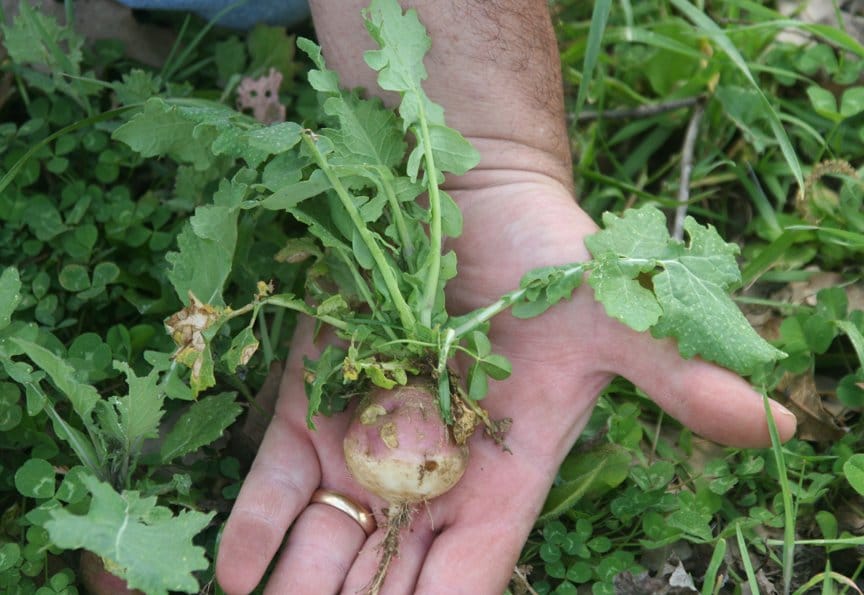It is always fun to experiment with new crops when it comes to building food plots and seeing which ones are most attractive to the resident deer population. One such crop I have enjoyed playing around with is turnips. While I have grown turnips many times in the home garden, it wasn’t until two years ago I began to plant them as a crop for deer in my food plots. The cool thing about planting turnips in your food plot is the deer love to eat both the leafy tops and the taproots (or the turnip). And if, for some reason, the deer don’t want the underground turnips, you can always harvest them and serve them for dinner yourself.
Turnips are in a group of plants called brassicas, which includes radishes, turnips, cauliflower, rape and kale. Turnips are a cool-season annual that are extremely high in protein and highly digestible to deer. Protein content can range from 15 to 20 percent in both the leaves and the roots. A well-managed food plot of turnips can yield more than 8 tons of forage per acre. This high production makes turnips excellent for planting in small food plots. Unlike cereal grains and other forage crops, the fiber content of brassica plants does not increase with age. This means that they stay extremely digestible to deer throughout the growing season. That being said, I have noticed that deer seldom eat the tops until they have become more mature or have experienced a good frost. This is primarily because younger leaves tend to be bitter while older leaves have converted more starch into sugars, which makes them sweeter and more attractive to deer. This often means that turnip leaves are still around in winter and fill a potential nutrition gap for whitetails in that season.
Turnips grow on a wide range of soils but do best on well-drained, fertile soils with a pH of 6.5 to 6.8. Turnips grow fairly quickly and reach maturity in 75 to 90 days. They grow well in both southern and northern climates. Turnips can be planted in late summer in northern climates or early fall in the southern states. Different turnip varieties produce different proportions of leaves and roots. Garden varieties tend to grow large roots and should be avoided. Lean toward varieties that produce more “greens” than roots as they will work best in food plot situations. Several seed companies market turnip and brassica mixes that are more suitable for deer and food plots.
Turnips can be planted as a stand-alone crop at a rate of 5 lbs./acre. They can also be planted in combination with other forages such as clovers, chicory or some type of cereal grain. Turnips and other brassicas tend to grow as large, wide, leafy plants that can crowd and shade out other plants, so if you plant them in a blend like this, cut your turnip seeding rate down to 2 lbs./acre. Seed can be broadcast and then lightly dragged in with a disk or chain harrow. Turnip seed is very small and should not be buried more than about 1/8 to 1/4 inch. I usually run my cultipacker over the food plot after dragging in the seed to ensure good seed-to-soil contact.
Fertilize at planting with about 300 pounds of 19-19-19 per acre to get the plants up and running. Soil testing will give you a more accurate recipe for fertilizer and lime needs.
Turnips are a unique plant to add to your food plots and interesting to watch as they develop both tops and taproots. They are fairly easy to establish and may make the perfect offering for small or remote food plots. I’ll discuss specific varieties, blends and other information on planting turnips in the complete profile in an upcoming issue of QDMA’s Quality Whitetails magazine. Join QDMA today to start getting more cutting-edge information about deer and habitat management.
